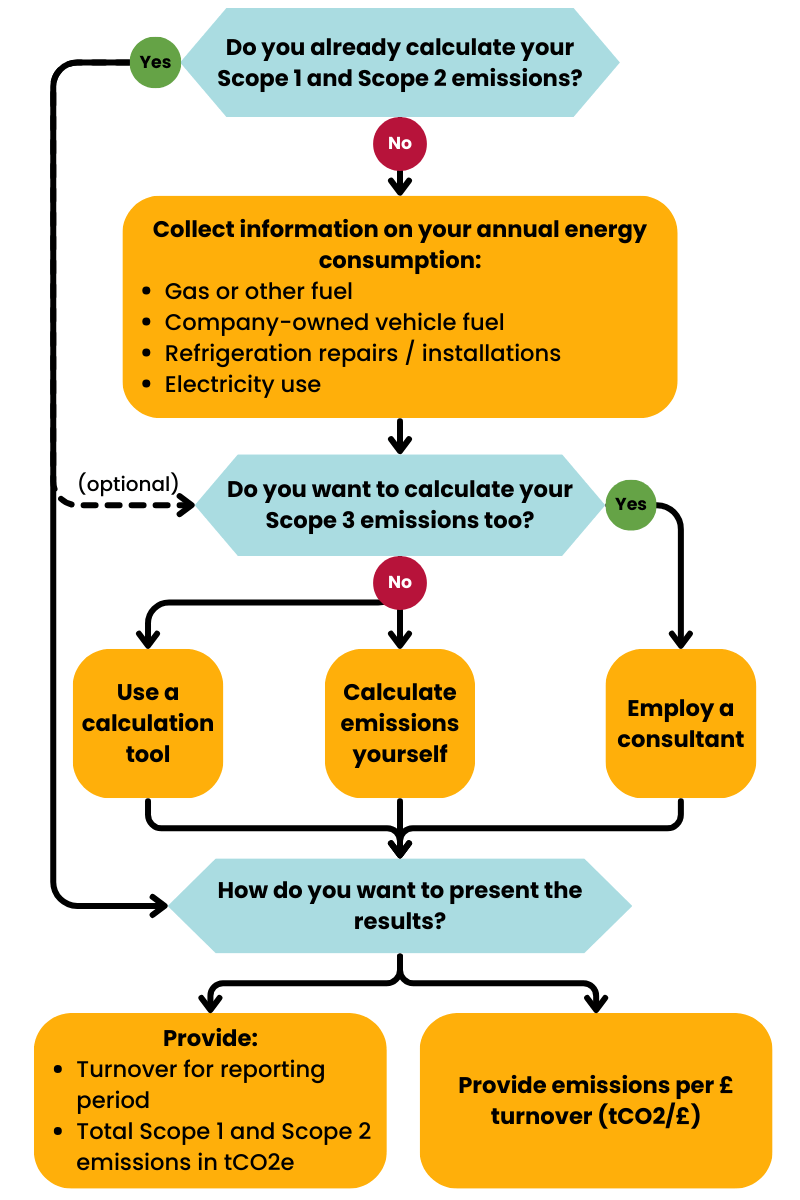We need to know the emissions associated with the service(s) or product(s) we procure from you, in units of carbon dioxide equivalent (kgCO2e or tCO2e).
At Energy Saving Trust, we annually calculate the greenhouse gas emissions of our operations. This includes emissions from:
- offices
- business travel
- work from home and commuting
- investments
- procurement
To accurately calculate emissions from procurement, we now require annual data on the emissions for goods and services we procure from suppliers.
We’re asking for your support in providing this information. This guidance summarises what information we need. Other customers may have already requested this information, and are likely to do in future, so calculating your emissions is a benefit to your business.
What information do you need?
How can we get this information?
You can collect this information in one of two ways:
- The specific greenhouse gas emissions of the product or service, if known.
- Calculated from your total organisation’s greenhouse gas emissions.
The specific emissions of the product or service may be known if you’ve undertaken work to calculate this information, such as a product Life Cycle Assessment.
If you’ve not consciously done this calculation, you’re unlikely to have this specific information. In this case, we can use your total organisation’s emissions and allocate a proportion of this to the product or service we procure from you.
This is normally done based on the amount we spend with you as a proportion of your total turnover.
How do we calculate our total organisation greenhouse gas emissions?
You may already calculate your emissions. For example if you’re required to submit to Streamlined Energy Carbon Reporting (SECR) or a similar emissions reporting scheme. If you’re not currently required to do so, you can estimate your emissions.
Emissions are defined in three ‘scopes’. These describe the level of control you have over the emissions.
- Scope 1 deals with direct use of fuel. This includes gas or other fuel used in boilers, and fuel used in company-owned vehicles.
- Scope 2 covers purchased energy. For most businesses this is your electricity consumption.
- Scope 3 covers all other sources of emissions. This includes purchased goods, employee and business travel in non-owned vehicles and public transport. Scope 3 emissions are challenging to calculate in full.
To calculate the emissions associated with the product or service we procure from you, we only need your Scope 1 and Scope 2 emissions. But calculating your Scope 3 emissions is likely to be of long-term benefit to your business and may be requested by customers in future.
How can we calculate Scope 1 and Scope 2 emissions?
There are three ways you can calculate these emissions:
- use an online calculation tool
- calculate your emissions yourself
- employ a consultant to calculate the emissions for you
Whichever method you use, you’ll need to know your total consumption for over the last financial year. This includes:
- gas or any other fuel
- company-owned vehicle fuel consumption
- details of any refrigeration equipment repaired or installed,
- your total electricity use
How should we present the results?
Once you’ve calculated your Scope 1 and 2 emissions for the last financial year, you’ll need to present this information as either:
- a total emissions value in tCO2e,
- an emissions-per-turnover metric. This metric is calculated by dividing your total Scope 1 and Scope 2 emissions by your turnover, to give a number in tCO2e/£.
We can then use this figure to include the emissions from your products and services in our own emissions calculations.
When should we recalculate our emissions?
You should calculate your Scope 1 and 2 emissions for each financial year and provide the results of the calculation to us at the end of each financial year.
If you’ve any questions on the process or want to speak to us about calculating emissions on your behalf, please get in touch.
Last updated: 19 September 2024
